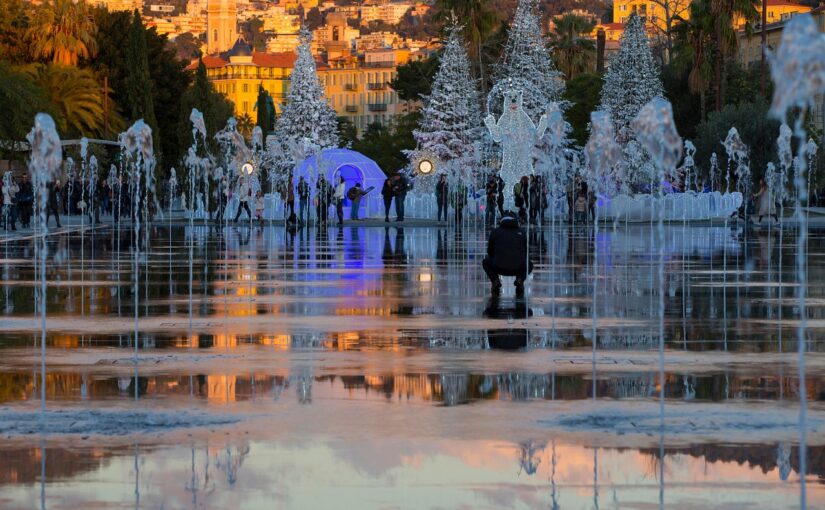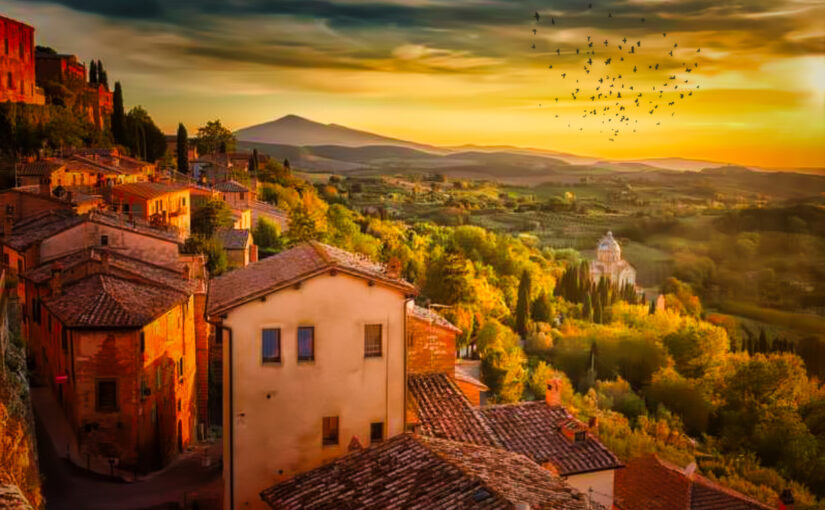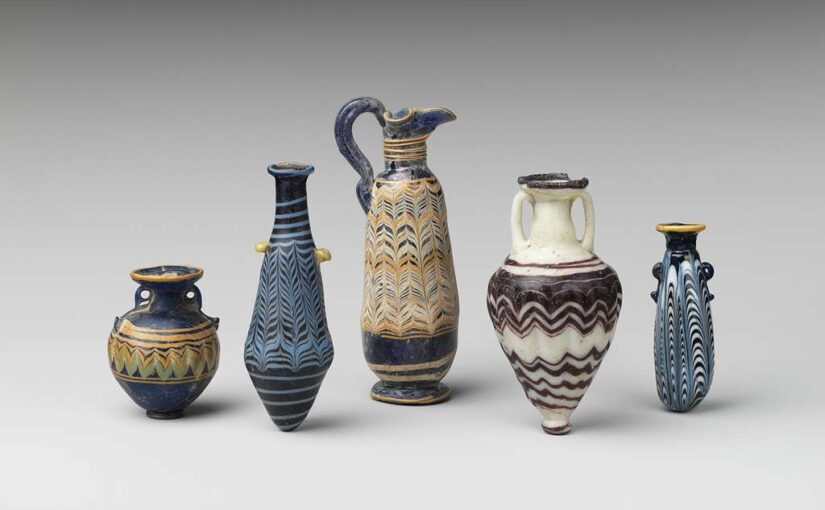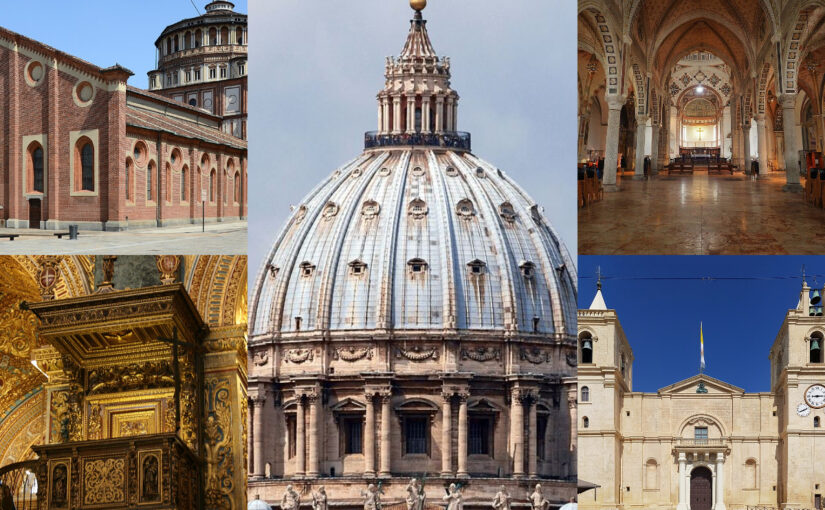In the swirling tides of the fifth-century Mediterranean, few tales unfold with the dramatic flair of the Vandals, those Germanic wanderers who carved out a sun-drenched kingdom along North Africa’s storied shores. From the bustling ports of Carthage to the wind-swept coasts of Tunisia and Algeria, their rule for nearly a century wove together threads of conquest, cultural fusion, and spiritual strife, transforming a Roman legacy into something vividly new. Imagine the clash of northern vigor against ancient olive groves and azure waves; this was no mere invasion, but a chapter of reinvention that echoes through the ruins travelers explore today, inviting us to ponder the fluidity of identity in a world on the brink of change.
Continue reading A Germanic Realm Under African Skies: The Vandals’ North African Odyssey (435-534 AD)Category: Travel & Places
The Mediterranean: Cradle of Longing and Loss
The Mediterranean Sea stretches like a vast, shimmering ribbon across the ancient world, a liquid crossroads where empires rose and fell, ideas collided, and human dreams took flight or drowned. In antiquity, it was the stage for epic voyages and brutal naval clashes, the birthplace of religions and the battleground where faiths waged war. Merchants from distant shores exchanged spices, silks, and philosophies here, forging the very foundations of what we call Europe. This is no mere body of water; it is a living archive, a restless storyteller that renews itself through geological shifts, political upheavals, and poetic visions. From its sun-drenched shores, one can almost hear the echoes of the first tales spun by sailors, their logbooks marking the dawn of literature itself: routes charted, ports sketched, journeys immortalized in ink and memory.
Continue reading The Mediterranean: Cradle of Longing and LossFestive Lights Over Lavender Fields: Christmas Markets in Provence and the Côte d’Azur
In the soft glow of winter evenings, Provence and the Côte d’Azur transform into a tapestry of twinkling lights and aromatic stalls, where the chill of December meets the enduring warmth of Mediterranean sun. Here, Christmas markets unfold not as mere holiday fairs, but as living celebrations of Provençal heritage, blending rustic village charm with the elegant allure of Riviera harbors. Picture narrow cobblestone streets in Aix-en-Provence lined with wooden booths, or the grand promenade of Nice alive with the scent of spiced chestnuts drifting from vendor carts. This southern French Christmas invites wanderers to savor a season that feels both timeless and intimately personal, rooted in traditions that echo the region’s olive groves and azure seas.
Continue reading Festive Lights Over Lavender Fields: Christmas Markets in Provence and the Côte d’AzurUnearthing Provence’s Hidden Gems: Truffle Hunts in Luberon’s Enchanted Woods
Every mid-November, as the mist clings to the valleys of Luberon, the air turns sharp with anticipation. Provence awakens to its quiet ritual. Truffle enthusiasts from across Europe gather here, drawn by the promise of unearthing nature’s hidden gems. Picture the scene: rolling hills carpeted in frost-kissed lavender stubs, ancient stone villages perched like sentinels on limestone ridges, and dense oak woods whispering secrets in the breeze. The Luberon, that enchanted pocket of Provence, feels alive with possibility. Oak roots delve deep into the earth, nurturing treasures that have lured foragers for centuries.
Continue reading Unearthing Provence’s Hidden Gems: Truffle Hunts in Luberon’s Enchanted WoodsDiscover Ancient Olive Groves: Tours, Tastings, and Harvests in Greece, Italy, Spain, and France
The Mediterranean basin pulses with the timeless rhythm of olive cultivation, a tradition that dates back over 6,000 years to the earliest human settlements. These ancient groves are more than just agricultural landscapes; they embody the region’s cultural soul, fueling myths, economies, and daily rituals from ancient Greece to Roman villas. For modern travelers, they offer a sensory journey into history, where the earthy scent of sun-warmed soil mingles with the sharp tang of fresh olive oil. Imagine strolling beneath gnarled branches heavy with fruit, savoring cool tastings that burst with peppery notes, or joining harvest festivals that echo centuries-old practices. This article spotlights some of the most renowned olive groves open to the public across Greece, Italy, Spain, and France, inviting you to immerse yourself in their heritage through guided tours, educational walks, and flavorful discoveries.
Continue reading Discover Ancient Olive Groves: Tours, Tastings, and Harvests in Greece, Italy, Spain, and FranceIcons, Murals, and Graffiti: Layers of Devotion in Mediterranean Streets
The narrow streets of the Mediterranean have always been galleries. Long before museums claimed sacred art as their territory, devotion lived on plaster and stone, painted onto the weathered facades of neighborhood shrines and tucked into the corners of alleyways. From the gold-leafed iconostasis of Byzantine churches to the spray-painted prophets of modern Athens, the visual language of faith has never stopped evolving. What we see today in the graffiti-covered walls of Naples or the towering murals of Barcelona is not a break from tradition but its continuation. Sacred art has simply changed its medium, its audience, and sometimes its gods.
Continue reading Icons, Murals, and Graffiti: Layers of Devotion in Mediterranean StreetsDiscovering Montalcino: Tuscany’s Timeless Hilltop Jewel
Winding up a narrow road through olive groves that cling to terraced hills, the air thick with the scent of wild rosemary and sun-warmed earth. Cresting the rise, Montalcino emerges like a sentinel from a forgotten era, its medieval walls bathed in the golden light of late afternoon. This Tuscan hilltop town, perched at 564 meters above sea level, commands views that stretch across the Val d’Orcia, a UNESCO-protected landscape of rolling vineyards and cypress-lined paths. For those embarking on Montalcino travel, the arrival feels less like reaching a destination and more like stepping into a living postcard, where the old-world charm of Italian hill towns whispers promises of unhurried discovery.
Continue reading Discovering Montalcino: Tuscany’s Timeless Hilltop JewelSavor the Mediterranean’s Aromas: Discover the Finest Perfumeries
Imagine the sun-kissed cliffs of the Italian Riviera dropping into turquoise waters, where the air hums with the zesty burst of ripe citrus from terraced groves and the salty whisper of coastal breezes. As you wander deeper into olive-shaded paths or Provençal lavender fields swaying under a cerulean sky, the Mediterranean reveals itself not just through sights but through an invisible tapestry of scents that linger on the skin like memories. Fragrances from the region’s storied parfumeries act as portable portals, distilling the vibrant essence of sun-drenched landscapes, wild herbs, and sea-infused florals into bottles that transport the wearer across borders and epochs. These scents blend citrus brightness with herbal earthiness, evoking the timeless allure of ancient cultures where perfume was both art and ritual, allowing anyone to embark on a sensory odyssey without leaving home.
Continue reading Savor the Mediterranean’s Aromas: Discover the Finest PerfumeriesMediterranean Churches Reimagined: Modern and Contemporary Innovations (19th–21st Centuries)
Across the sunlit Mediterranean, church architecture tells a story of daring reinvention. Nothing remains static amid the region’s waves of artistic and technological evolution, from the echoes of ancient domes to the angular abstractions gracing skylines today. As the nineteenth century unfolded, historicism swept through southern Europe, resuscitating bygone styles in dazzling hybrids. Brick and marble gave way to concrete and glass. Familiar basilicas shared streets with streaks of cubist geometry and biomorphic curves, ushering in new spiritual possibilities for bustling cities and quiet villages alike.
Continue reading Mediterranean Churches Reimagined: Modern and Contemporary Innovations (19th–21st Centuries)Mediterranean Churches: Harmony and Drama from Renaissance to Baroque (15th–18th Centuries)
In the midst of Mediterranean sunlight, the silhouettes of Renaissance and Baroque churches command city skylines and rural landscapes with enduring elegance. These sanctuaries mark a pivotal transition in European architecture, a journey from the constraints of Gothic engineering to a new era of symmetry, classical grace, and, later, explosive theatricality. For nearly four centuries, church builders across Italy, Malta, and Germany reimagined sacred space, beginning with the measured poise of the Renaissance and culminating in the swirling spectacle of the Baroque.
Continue reading Mediterranean Churches: Harmony and Drama from Renaissance to Baroque (15th–18th Centuries)








